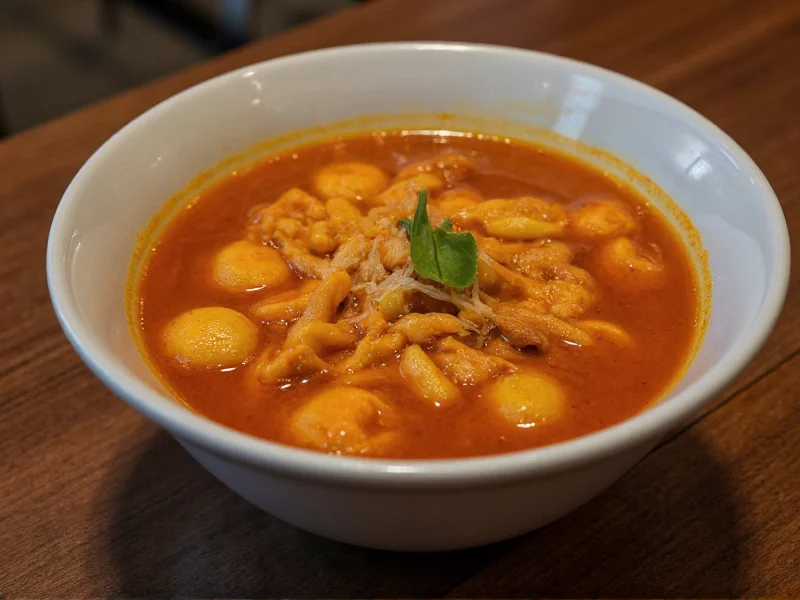Originating in communal kitchens across Europe and Asia, perpetual soup represents one of humanity's earliest sustainable cooking practices. Historical records show monastic communities in medieval Europe maintaining perpetual stew pots that simmered for months or even years, with monks continually replenishing ingredients as they were consumed. Similar traditions existed in Asian cultures, where endless broth practices preserved flavors across generations.
The Mechanics of Never-Ending Soup
At its core, perpetual soup operates on a simple principle: the broth base remains constant while solid ingredients cycle through. As portions are served, cooks add equivalent amounts of fresh vegetables, meats, and seasonings. The continuous simmering allows flavors to deepen and meld over time, creating a complex taste profile impossible to achieve with single-batch cooking.
Proper temperature management proves critical for successful perpetual soup preparation. The pot must maintain a gentle simmer (approximately 180-200°F or 82-93°C) to prevent bacterial growth while allowing flavors to develop. Modern practitioners often use slow cookers with precise temperature controls to maintain this delicate balance.
Historical Significance Across Cultures
Perpetual soup traditions emerged independently across multiple civilizations, each adapting the practice to local ingredients and needs. In 17th century France, pot-au-feu perpetuel was common in rural households, where a single pot provided nourishment for extended families. Spanish olla perpetua traditions supported community kitchens, while Korean guk practices maintained ancestral broth recipes.
| Culture | Traditional Name | Key Characteristics |
|---|---|---|
| French | Pot-au-feu perpetuel | Beef-based with root vegetables, maintained in communal village pots |
| Spanish | Olla perpetua | Bean and meat stew, often used in charitable community kitchens |
| Korean | Guk | Seafood or meat broth, passed down through generations |
| English | Huffkin pot | Bread-based stew, commonly used in medieval monasteries |
Modern Applications and Food Safety
Contemporary interest in sustainable cooking has revived perpetual soup practices, though modern food safety standards require careful attention. The key to safe perpetual soup preparation involves maintaining proper temperatures and understanding ingredient turnover rates. Perishable items like dairy or seafood shouldn't remain in the pot longer than 24-48 hours, while the broth base itself can continue indefinitely with proper management.
Food safety experts recommend the "one-third rule" for maintaining perpetual soup: never let more than one-third of the total volume consist of ingredients older than 72 hours. This practice ensures freshness while preserving the continuous nature of the broth. Regular skimming of impurities and fat accumulation also proves essential for maintaining quality in long-term perpetual soup preparation.
Creating Your Own Perpetual Soup
Starting a perpetual soup requires careful planning but offers rewarding results. Begin with a high-quality broth base using bones, vegetables, and aromatics. After the initial simmer (at least 4-6 hours), you can begin the perpetual cycle. When serving, remove no more than one-third of the pot's contents, then replenish with fresh ingredients in equal proportion.
Successful perpetual soup practitioners recommend keeping a dedicated pot for this purpose, as the seasoning develops over time. Cast iron or heavy-bottomed stainless steel pots work best for maintaining consistent temperatures. Many modern cooks use programmable slow cookers with temperature monitoring to simplify the process of maintaining a never-ending soup tradition in contemporary kitchens.
Sustainability Benefits of Continuous Cooking
Perpetual soup represents an ancient solution to modern food waste challenges. By continuously cycling ingredients, households can utilize vegetable scraps, meat trimmings, and leftovers that might otherwise be discarded. This zero-waste perpetual soup method aligns perfectly with contemporary sustainability goals while connecting us to culinary traditions spanning centuries.
The energy efficiency of perpetual cooking also deserves consideration. Maintaining a constant simmer requires less energy than repeatedly bringing cold ingredients to boil, making this traditional practice surprisingly eco-friendly by modern standards. Many sustainable living advocates have embraced perpetual soup as part of a broader movement toward resource-conscious cooking practices.
Common Misconceptions About Eternal Broth
Several myths surround perpetual soup traditions. Contrary to popular belief, properly maintained perpetual soup doesn't become increasingly salty over time—seasoning adjustments balance this naturally. Additionally, the notion that perpetual soup inevitably becomes cloudy or unappetizing stems from improper maintenance rather than the technique itself.
Modern food science has validated many aspects of traditional perpetual soup practices. The continuous cooking process actually enhances nutrient availability in certain vegetables and creates beneficial compounds through prolonged simmering. Understanding these perpetual soup food safety guidelines helps separate fact from fiction in this enduring culinary tradition.











 浙公网安备
33010002000092号
浙公网安备
33010002000092号 浙B2-20120091-4
浙B2-20120091-4